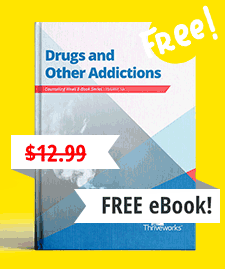
Autism spectrum disorder (ASD) is a neurological and developmental disorder that typically appears in the first three years of life. It often impacts a person’s social abilities and interactions and can be accompanied by an assortment of learning problems (though, not always). ASD varies in its severity, and some people develop serious language and communication problems.
The severity of ASD symptoms can change over time, and people may have increased progress—or severe regression—at different stages of development. Children who aren’t smiling by six months, waving or babbling by one year of age, or using phrases consisting of two words by two years, might be at risk of developing ASD.
DSM-5 Criteria for Autism Spectrum Disorder
According to the Diagnostic and Statistical Manual of Mental Disorders, Fifth Edition (DSM-5), which is published by the American Psychiatric Association, the following are the criteria in diagnosing ASD:
A. Insufficient social communication and interaction in multiple capacities, displayed as:
- Being unable to hold a conversation, spanning from abnormal social approach and disclosing inappropriate things about oneself to failing to convey one’s feelings.
- Inadequacies in communicating, including facial expressions, gestures, and eye contact. Face often shows no signs of communication.
- Insufficiencies in developing, continuing and comprehending relationships—problems with adjusting to behaviors that fit social situations. E.g., hard time making up games, stories, and other activities with others, no interest in being sociable or making friends.
B. Restricted, repeating ways of acting (at least two of the following):
- Repeatedly stacking up books or other items; flipping objects.
- Insists on everything being the same, inflexible with routines or ritual patterns (serious distress at little changes, problems making changes, strict pattern of thought, following the identical path/walkway/direction without changing, or insists on eating the same foods each day).
- Dedicated to certain things to an excessive extent (very serious attachment or overly interested in items that are unusual).
- Seemingly indifferent to pain and temperature, unfavorable response to some noises and how some things feel, exaggerated amount of sniffing or feeling items, strong interest in visuals.
C. Symptoms are present in the early developmental period (but may not be fully realized or demonstrated until later when social demands become too much).
D. The individual suffers socially, occupationally, or in other important areas of life.
E. These disturbances are not better explained by an intellectual disability or global developmental delay.
Treatment of Autism Spectrum Disorder
Early treatment for ASD, as well as proper care, can lessen the individual’s difficulties while helping them to learn new skills. People with ASD face a wide range of issues, which means there isn’t one treatment for it—there are many. A mental health professional can help you determine which approach is best for you and your unique situation. The following prove effective:
- Behavioral training and management is used when the individual displays behavior that is considered good and is given a reward of some type in order for him to continue acting this way.
- Occupational therapy teaches skills that help the individual live as independently as possible. These skills may include dressing, bathing, and eating.
- Sensory Integration Therapy helps the person cope with sensory information, such as signs, sounds, and smells. It may help an individual who is bothered by certain sounds or doesn’t like to be touched.
- Community group programs help to better inform/educate the parents. It can be a great support system, where individuals with the same experiences can share their stories and not feel as isolated.
- The picture exchange communication system uses picture symbols to teach communication skills. The person learns how to use picture symbols to ask and answer questions, as well as to have a conversation.
Living a Happy, Healthy Life with Autism Spectrum Disorder
You can go on to live a happy, healthy life with ASD. The above treatment methods can help, as can a make-it-happen attitude. Just ask Alexis Wineman and James Durbin who are finding success in life even despite ASD:
- Alexis Wineman went from Miss Montana to Miss America in 2014, which marked the first time in the history of the pageant that a woman with ASD was crowned. Wineman said she challenged herself to enter the competition because it seemed like the peak of her own personal Mount Everest. She added that it’s kind of ironic that a girl who was told she was different and considered an outcast by many won the nation’s biggest beauty pageant.
- James Durbin, the American Idol alumni from season 10 released the single, “Parachute,” a few years ago. He was first diagnosed with Asperger Syndrome and Tourette syndrome at age 10. At the same time that he found out about the diagnoses, he was given a hand-me-down guitar and a cheap tuner. He said music is like medicine and can benefit anyone no matter what genre it is. “There’s just so much you can learn,” said Durbin. “It’s all about focus and for me, not only on the Autism Spectrum but also the Tourette’s syndrome, focus was something I needed help with. Music is my focus.”
Let’s keep in touch! Sign up to receive our newsletter:
Start a Relationship with An Exceptional Counselor
- Skilled and caring professional counselors
- Accepting all major and most insurances
- High-touch customer service & premium benefits
- Same- or next-day appointments
- Ultra-flexible 23.5hr cancellations











